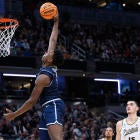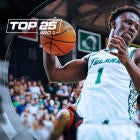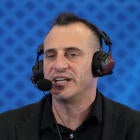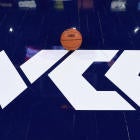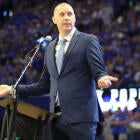Emails unsealed this week as part of a class-action lawsuit against the NCAA, EA Sports and the Collegiate Licensing Company indicate the characteristics of individual players were knowingly used in video games, according to reports in the Birmingham News and on ESPN.
 |
| Ed O'Bannon is part of a class-action lawsuit against the NCAA, EA Sports and the CLC. (Sports Illustrated) |
Former UCLA star Ed O'Bannon is among a number of former college basketball and football players who are challenging the NCAA's licensing of their images. According to the Birmingham News, EA Sports and the NCAA previously have said the avatars in video games aren't based on actual players.
An email sent from Nebraska chancellor Harvey Perlman to Big 12 commissioner Dan Beebe and Texas President Bill Powers shows there was some disagreement on whether the NCAA could sell athletes' publicity rights without compensating them.
"This whole area of name and likeness and the NCAA is a disaster leading to catastrophe as far as I can tell," Perlman wrote. "I'm still trying to figure out by what authority the NCAA licenses these rights to the game makers and others. I looked at what our student athletes sign by way of waiver and it doesn't come close."
Other school presidents and chancellors opposed this line of thinking, with Beebe saying the NCAA and its teams and conferences only allowed video games to use logos, team colors and stadiums. Meanwhile, Chris Plonsky, an associate athletic director at Texas, said EA Sports would have to make every player a "stick figure" or "generic robot" if the student-athletes could contest their likeness being used.
Plonsky also compared the NCAA to a "version of the army."
"We have things we have to do a certain way to raise funds and pay for the scholarships and other things (student-athletes) and their parents expect," Plonsky said in an email to Beebe.
Per ESPN, Perlman responded: "I have yet to have anyone define for me the 'values of higher education' in a way that is consistent with commercial exploitation of a student athletes name or likeness. & As soon as it becomes commercial tied to selling a product -- I don't think we should be doing it."
In 2009, Peter Davis, an executive with the NCAA, wrote that EA Sports was allowed to use student-athlete images, but could not make them look more like real student-athletes.
Executives at CLC had internal email exchanges in 2007 regarding the use of real names during creation of the game -- and the potential consequences.
Wendy Harmon, a marketing coordinator at CLC, wrote an email saying that real names from college rosters were being used in the development of the games, so that the stats in the game would be accurate. EA Sports assured her the names were removed before the games were released to the public.
In response, CLC senior vice president Derek Eiler wrote to other executives: "Just an FYI on this in case word reaches the NCAA. This is exactly the type of thing that could submarine the game if it got into the media."
According to ESPN, the O'Bannon case is scheduled to go to trial in early 2014.
Other findings from the unsealed emails:
- It seemed for a time that the use of real names in the video games was going to become a reality. Then-NCAA executive Greg Shaheen even helped EA Sports make a presentation in front of NCAA President Myles Brand, demonstrating how the college sports video games could help reach teenagers.
- Wallace Renfro, a senior policy adviser for the NCAA, suggested that the term "student-athletes" be dropped. "Just refer to them as students," Renfro stated in an email to new NCAA president Mark Emmert.












